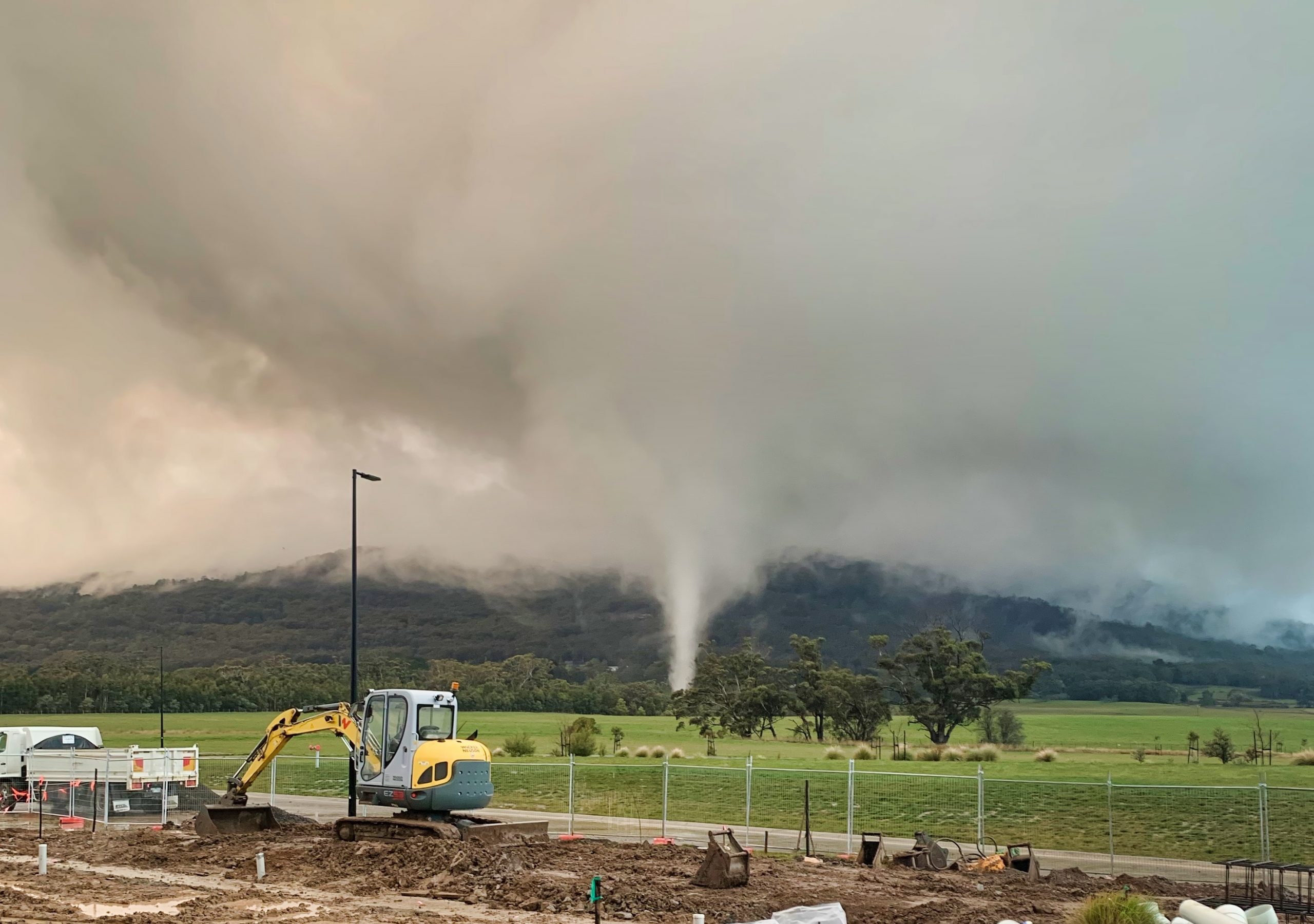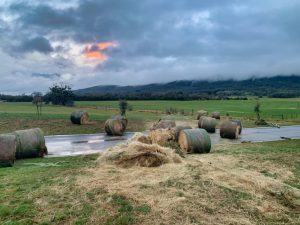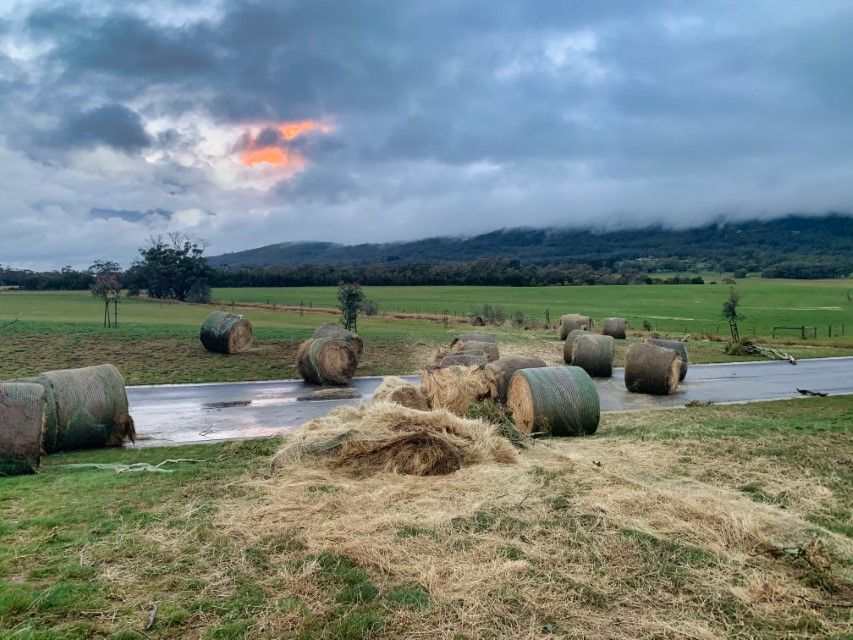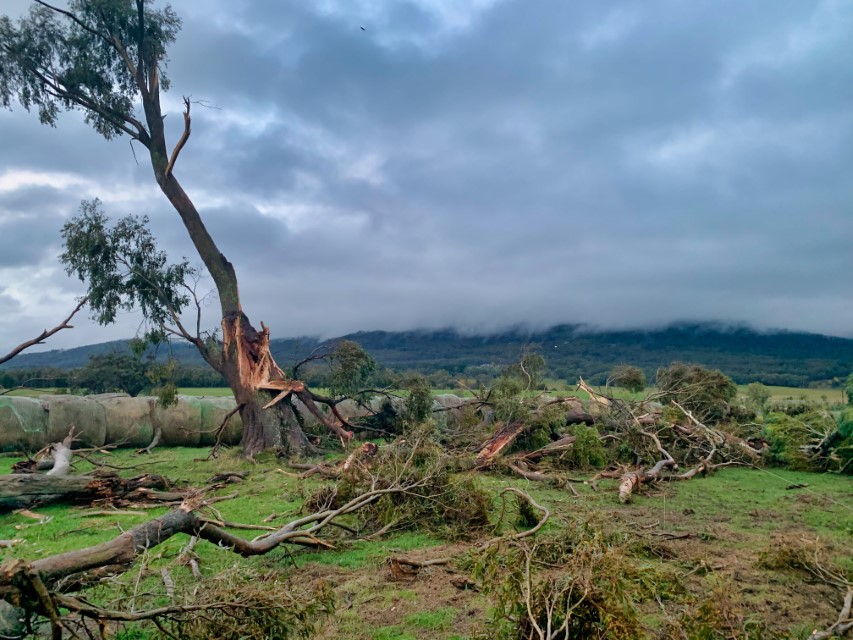
A “weak tornado” ripped through a farm at Woodend last Thursday afternoon.
The unusual weather system whirled through a paddock about 5.30pm.
The tornado was short lived and only affected a small area, but it tore through hay bales, throwing them into the air and leaving a small trail of damage in its wake.
Bureau of Meteorology senior forecaster Tom Fejes said this one formed in a large convective shower.
“There was no lightning observed but the radar did show some large convective showers with some weak rotation showing evidence of the tornado,” Mr Fejes said.
“Normally it just needs to be a reasonably unstable environment with rotation and height with the winds and low cloud conditions as well.”
Tornadoes are most often associated with severe thunderstorms; they typically form when strong winds of various directions are drawn upwards into a storm. Occasionally weak tornados can form in cumulus clouds without the presence of a storm.
Known as a ‘coldie’ – a cold season tornado – these events are usually caused by cold fronts sweeping up from the Southern Ocean.
They consist of rotating columns of air that move across the ground at 50-80km/h, with typical damage paths being anything from less than a kilometre to several kilometres long and very narrow.
Unlike the tornadoes of the United States, which can exist for hours, travel hundreds of kilometres and occur mostly during the warmer months, coldies form and collapse in the space of about 10-30 minutes.
In Victoria coldies generally occur once or twice a year, but it is rare that they move through populated areas – many go unnoticed in non-populated areas.











